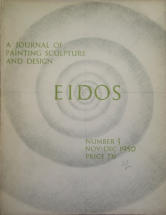



All texts copyright Richard Shillitoe
the occultist:
the golden section
The golden section is present throughout Western culture. Mathematically,
the golden section is that point on a line which divides it into two parts,
such that the proportion of the smaller part to the larger is the same as the
proportion of the larger part to the whole line. This requires that the line
be divided at approximately 0.618 of its length.
Perceptually, the section occurs at the point where the length of the
smaller component is maximally striking without challenging or
overwhelming the larger component. Aesthetic experiments have shown
that people find the golden section proportion more pleasing than any
other. From the Great Pyramid of Gizah to the buildings of Le Corbusier,
architects have incorporated the proportion into their designs. Musicians
have incorporated it into their compositions. In ancient Greece, the
Pythagoreans took a mystical attitude towards it, possibly because, like pi,
it cannot be calculated: it extends to an infinite number of decimal places
without recurring. Plato, in the “Phaedo”, described the Pythagorean belief
that the body is maintained by a ‘tensive relation that exists between pairs
of opposites’, and that the ‘soul is a harmony’ resulting from the proper balance between opposites. A line
that is divided at the point that forms the golden section may be thought of as the unity divided into its
component parts, or opposites, to provide the greatest harmony.
Perhaps surprisingly, Colquhoun made very little use of the golden section. It can be found in only eight works,
all dating to 1939 or earlier. One would not expect to find significant dimensions such as the golden section
incorporated into automatic works, save, perhaps, in the dimensions of the paper or canvas support. And,
indeed, they are entirely absent. The conclusion must be that for a limited period only, the golden section
was designed into Colquhoun’s compositions. It has the appearance of being a stylistic experiment rather than
a method of introducing hermetic significance.
A partial exception to this conclusion is that in 1950 Colquhoun designed the cover
for “Eidos”, a short-lived journal of painting, sculpture and design that ran for only
three issues. Colquhoun’s design was based on the φ spiral. According to the
editorial in the first issue, the φ symbol was chosen to represent the eternally
recurrent rhythm of life itself: ‘being numerically related to the Fibonacci series
which is fundamental in nature and unwinding in the proportions of the Golden
Section which is fundamental in art, it has a creative as well as an historical
application.’










































